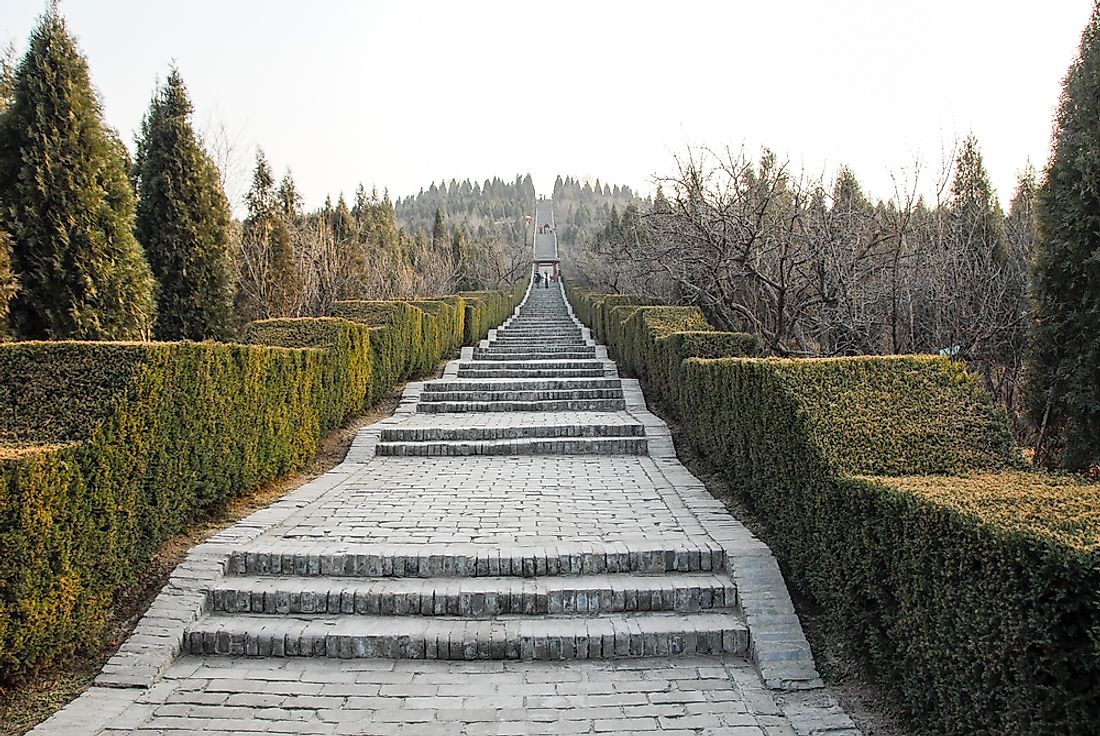Mausoleum of the First Qin Emperor - UNESCO World Heritage Sites in China

The tomb of the first Qin emperor is situated in Lintong District, China. The mausoleum’s model is of Xianyang, the Qin capital, and it has inner and outer cities. The inner city has a circumference of 1.55 miles and the outer city 3.9 miles. The tomb faces east and is situated in the southwest part of the inner city. The tomb has not yet been excavated though excavations have been done in the larger necropolis around the tomb. The mausoleum and the Terracotta warriors were listed as heritage sites in 1987. The terracotta warriors are a funerary art buried with Emperor Qin Shu Huang, the warriors represented Qin’s armies and were supposed to guard the emperor in his afterlife. The burial complex of Qin Shi Huang is a miniature version of the emperor’s palace and empire with his tomb at the middle.
Building of the Mausoleum
Plans to build the mausoleum started in 246 BCE when Emperor Qin took over the throne at age 13. Official construction of the mausoleum took off in 221 BCE after the emperor had managed to conquer the other six states of Zhao, Qi, Chu, Han, Yan, and Wei to unify China. Before the completion of the mausoleum, a peasant rebellion broke out and the 700,000 people building the mausoleum were sent to suppress the rebellion, so the building of the mausoleum stopped.
First Discoveries
Yang Zhifa, his five brothers, and Wang Puzhi discovered the first pieces of bronze arrowheads and warriors while digging a well in March 1974 in Xiyang village. After digging depth of 6.56 feet, they found terracotta bricks, hardened soil, and bronze arrowheads. Yang Zhifa threw the terracotta pieces at a corner in the field and took the arrowheads to sell. Other villagers collected the terracotta bricks to make pillows. Fang Shumiao, who was in charge of the hydraulic works, suggested that they should sell the objects they had found to the district’s cultural center. Zhao Kangmin from the cultural center came to the village and bought all the objects that the villagers could unearth from the site. In May 1974, archaeologists from Shaanxi visited the site to carry out the first excavations, and the site would be known as Pit 1. Pit 2 was discovered in May 1976, and Pit 3 in July of the same year. Excavation has been done on an area covering 215,278.21 square feet and 7,000 terracotta warriors and horses, several weapons, and 100 wooden chariots have been discovered.
Further Exploration of the Mausoleum and Underground Palace
In 1976, several scholars suggested the exploration of the underground palace to promote tourism, prevent grave robbery, and to protect the underground artifacts as the mausoleum is located in a seismic zone. Some of the issues that have held back the exploration of the palace include lack of technology in China to carry out the extensive excavation of the underground palace. The State Administration of Cultural Heritage suggested that research and evaluation should be carried out before excavation to be able to preserve and protect the underground palace.











